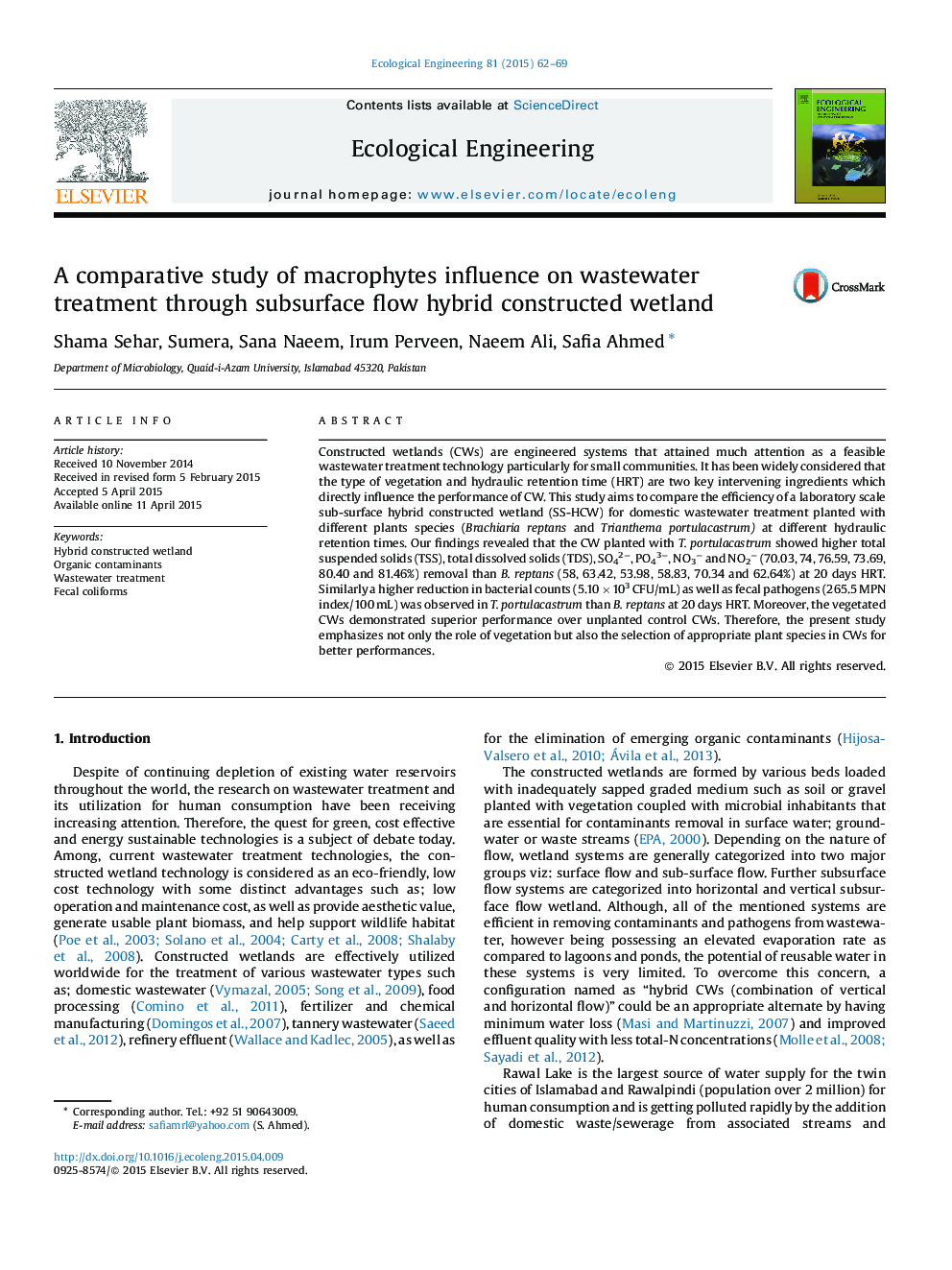| Article ID | Journal | Published Year | Pages | File Type |
|---|---|---|---|---|
| 4389056 | Ecological Engineering | 2015 | 8 Pages |
•Role of vegetation and hydraulic retention time in constructed wetland was studied.•The commonly existing vegetations were utilized to treat domestic waste water.•Both vegetations and HRT are key ingredients in obtaining high treatment efficiency.
Constructed wetlands (CWs) are engineered systems that attained much attention as a feasible wastewater treatment technology particularly for small communities. It has been widely considered that the type of vegetation and hydraulic retention time (HRT) are two key intervening ingredients which directly influence the performance of CW. This study aims to compare the efficiency of a laboratory scale sub-surface hybrid constructed wetland (SS-HCW) for domestic wastewater treatment planted with different plants species (Brachiaria reptans and Trianthema portulacastrum) at different hydraulic retention times. Our findings revealed that the CW planted with T. portulacastrum showed higher total suspended solids (TSS), total dissolved solids (TDS), SO42−, PO43−, NO3− and NO2− (70.03, 74, 76.59, 73.69, 80.40 and 81.46%) removal than B. reptans (58, 63.42, 53.98, 58.83, 70.34 and 62.64%) at 20 days HRT. Similarly a higher reduction in bacterial counts (5.10 × 103 CFU/mL) as well as fecal pathogens (265.5 MPN index/100 mL) was observed in T. portulacastrum than B. reptans at 20 days HRT. Moreover, the vegetated CWs demonstrated superior performance over unplanted control CWs. Therefore, the present study emphasizes not only the role of vegetation but also the selection of appropriate plant species in CWs for better performances.
Graphical abstractFigure optionsDownload full-size imageDownload as PowerPoint slide
